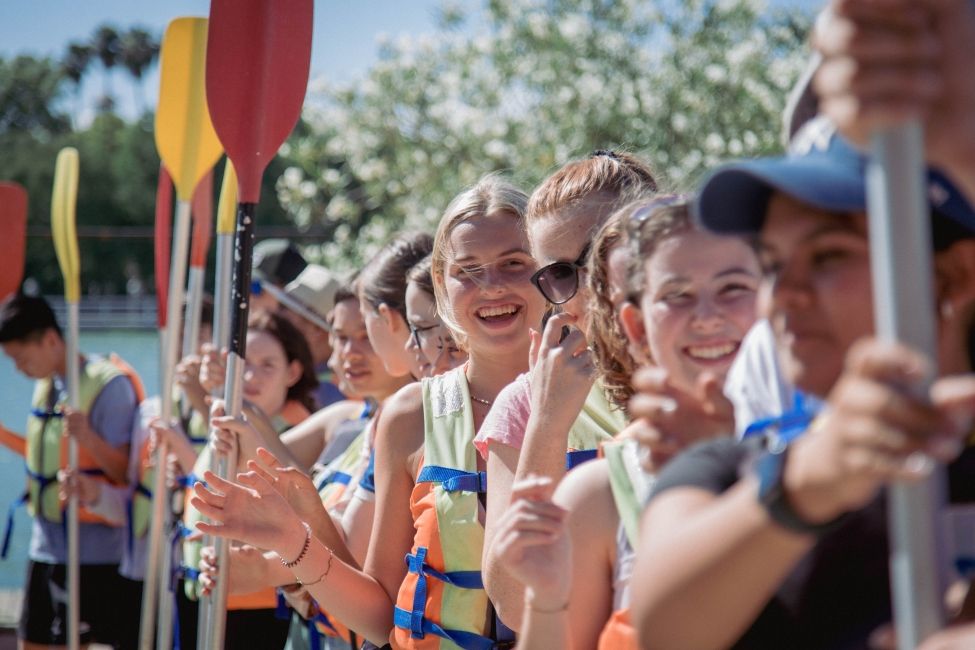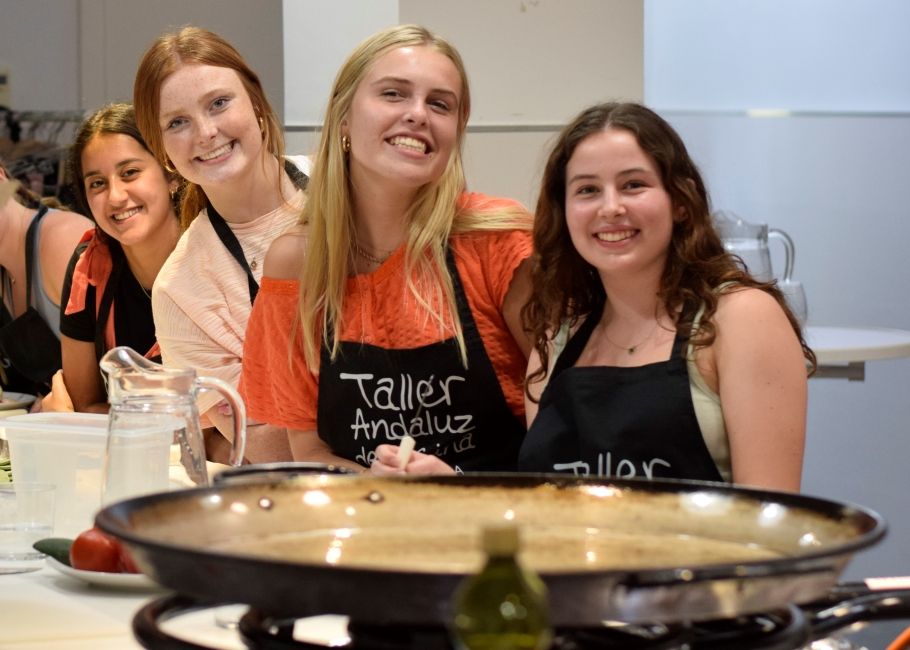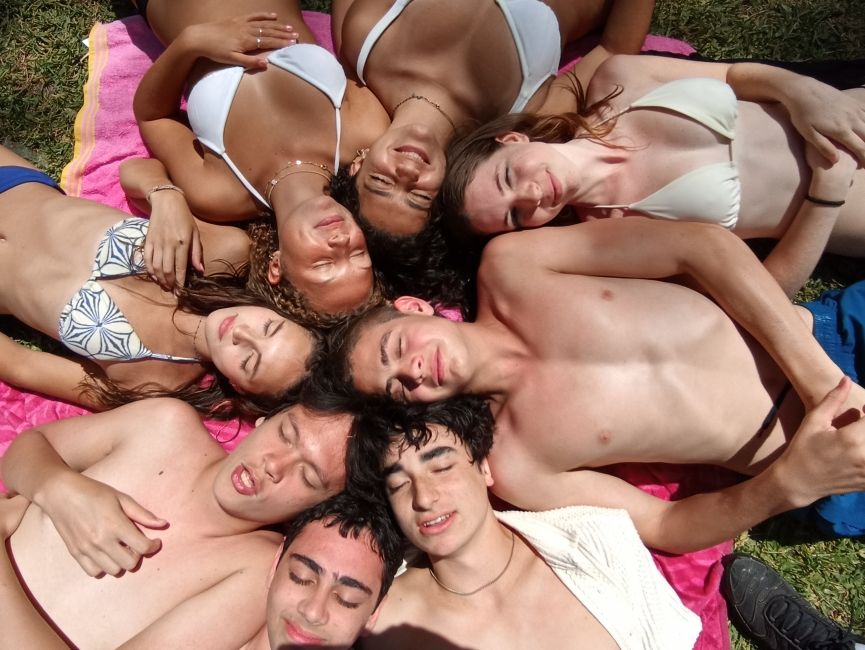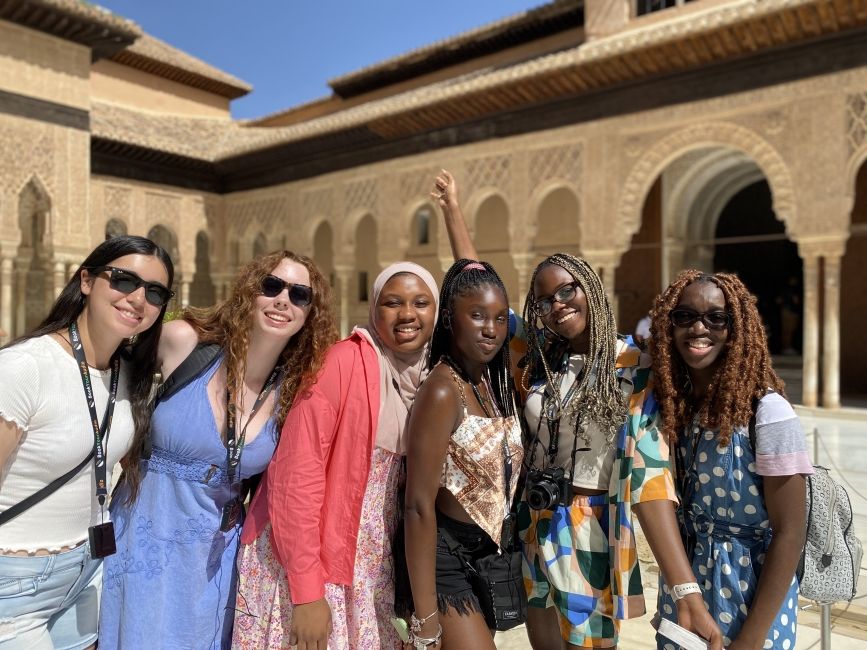Spanish life of a high school student
Be prepared for a challenge, but also the joys of living in Spain with a Spanish family and a Spanish school. Family life can be quite different from what you are used to in the USA. It can differ from you being the youngest in your American family to being oldest in your Spanish family, or from you being extremely independent in your American home to being quite reliant on your Spanish family. School life can also differ quite dramatically. From the amount of subjects you have in Spain compared to the USA, or your relationships with Spanish teachers to American teachers. Keep in mind that not only is your house, family, and school changing, but so is your time zone, food, routine, culture. No matter who you are this will be uncomfortable in the beginning, but I guarantee in time you will adjust or learn to love it.
As far as an average day in Spain this is more or less what you can expect: On school days you will get up at your desired time, get ready for school, eat breakfast alone or with your family, and then go to school by car, public transportation, or walking depending on your family. School days often are from 8:00am to 2:30pm. You can expect to have 11 different subjects that you study in school, but you only have 6 classes a day that are each for an hour with a 30 minute break to eat a bocadillo (spanish sandwich). Most people do not have activities right after school because lunch and the siesta after lunch are a very important part of Spanish culture. Therefore, you will most likely return home to a large lunch that you eat with your entire family. This is a time to talk to your family about your day and hear about their day as well. After you eat a few family members, if not all, will take a siesta. CIEE and your host families encourage students to have an after school activity in the afternoon. There are a multitude of options to choose from. Sports are popular and easy to join, but there are also activities such as cooking classes, pottery classes, yoga, etc. Depending on what activity/activities you choose you may have it everyday or less. The Spanish have merienda around 6pm. The rest of your afternoon can be used for studying or for whatever you choose. Dinner is between 9pm-11pm depending on your family and it is most commonly eaten together as a family like lunch.
Weekends can be quite different from your everyday life. Mornings start much later and breakfast is closer to 10-11am. From there you can decide if you want to spend time with your host family, spend time with friends, have some alone time, or explore. Your host families really appreciate you spending time with them, but they are also happy if you go out and enjoy yourself so long as you communicate with them. Almost all host families have curfews for their real and host children, but they are never early unless it is a school night. On holidays it is very common that you will go to the beach with your host family because most Spanish families have a second house at the beach, or else holidays are quite similar to weekends just with more celebrations.
While none of this seems out of the ordinary; simple things like the food and culture can make it quite a change. Breakfast in Spain is very small. In fact, a lot of people don’t have breakfast and they have something more similar to brunch. This is the bocadillo students eat during the break at school. Lunch is the biggest and most important meal. It normally consists of meat and a starch. Merienda is often a snack with coffee. As far as dinner goes it tends to be smaller than lunch and what type of food you eat varies. Families like to eat together during this meal as well.
There are quite a few culture shocks commonly experienced in Spain for Americans. A big one is the relationship with food and your weight. Your Spanish families will often give you large portions of food and often they’ll tell you to eat more after you finish. Most people gain weight while abroad and the Spanish are not afraid to tell you. They talk about your body and other people’s bodies very openly. Both critically and supportively. You may be told you are too skinny and need to eat more, or you may be told you are gaining weight and should work out or eat less. Another culture shock Americans experience is the racism in Spain. Racism of the Asian community, specifically China, and the community of North Africa is a lot more common. And they do not discuss racism here a lot, so they don’t think what they say is wrong. As well as, black face is incorporated into one of their holidays, but they consider it normal and non-offensive. Another culture shock is the lack of awareness and care for mental health. It is not talked about nor valued in Spain unlike in the USA. These are the three biggest culture shocks. There are quite a few smaller culture shocks, but they are much less intense.
Don’t let these culture shocks or the uncomfort of the beginning scare you though. You will grow significantly as a person through these challenges and gain so much appreciation for different things in both cultures. Also your Spanish will greatly improve, and you’ll forever have a second home. By the end of your exchange you won’t want to leave.
Maggie Petersen.
Related Posts
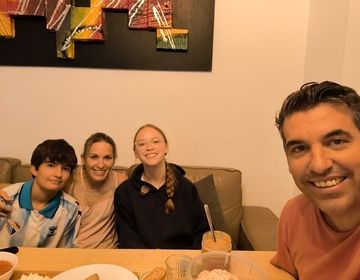
How Studying Abroad Changed My Life
This post is student written by Beatrix D. who participated in an High School Abroad Fall Trimester in Spain! I never quite imagined myself eating tomato and garlic rubbed on... keep reading

How My High School Semester Abroad Has Helped Me Become Multilingual
This post was written by CIEE Global Navigator alum Fiona K. from Massachusetts who participated in the Global Navigator Marketing Internship in spring of 2025. "Stand up if you are... keep reading

Why I Left My Small Town in Alaska to Attend High School in Seville
This post was written by CIEE Global Navigator alum Makena D. from Alaska who participated in the Global Navigator Marketing Internship in spring of 2025. Living in a new city... keep reading

